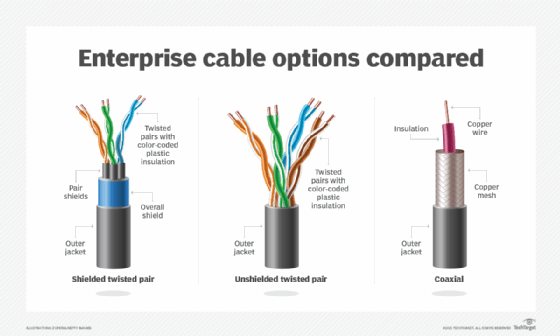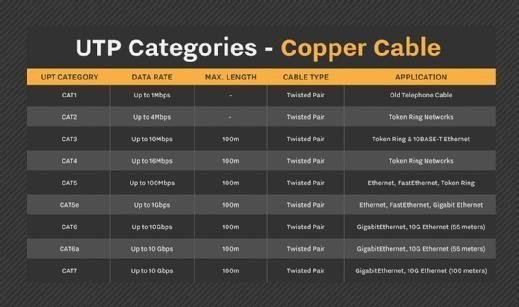crosstalk
What is crosstalk?
Crosstalk is a disturbance caused by the electric or magnetic fields of one telecommunication signal affecting a signal in an adjacent circuit.
Essentially, every electrical signal has a varying electromagnetic field. Whenever these fields overlap, unwanted signals -- capacitive, conductive or inductive coupling -- cause electromagnetic interference (EMI) that can create crosstalk.
Overlap can occur with structured cabling, integrated circuit design, audio electronics and other connectivity systems. For example, if there are two wires in close proximity that are carrying different signals, their currents will create magnetic fields that induce a weaker signal in the neighboring wire.
There are several examples of crosstalk that occur in various technical capacities. Here are a few of the most common.
Crosstalk in telephony
The definition of crosstalk, as it relates to telecommunication or telephony, is when there is leakage from a separate conversation from a nearby circuit into the phone conversation of someone else nearby.
The crosstalk issue can be extremely disruptive, particularly in a business setting. If it's an analog connection, twisted pair cabling can often be employed to reduce the likelihood of crosstalk.

Crosstalk in cabling
As it relates to structured cabling, crosstalk is electromagnetic interference from one unshielded twisted pair (UTP) to another. Typically, it occurs because they are running in close proximity to each other.
The currents traveling through these adjacent pairs of cabling create magnetic fields that interact and disrupt one another. There are several important terms to understand as crosstalk relates to cabling.
Near-end crosstalk (NEXT)
NEXT refers to a cable's ability to reject crosstalk. In other words, the higher the NEXT value, the better the connection's ability to reject crosstalk. The NEXT value is expressed in decibels per foot, and will vary significantly with the frequency of the transmission.
It is referred to as "near-end" because the interference between the cables is measured at the same end of the cable that is introducing the interference.
Power sum near-end crosstalk (PSNEXT)
PSNEXT is a NEXT metric that denotes the sum of crosstalk attribution from all adjacent pairs as the sum of the NEXT of the three-wire pairs as they impact the fourth pair in a four-pair cable system.
Evaluating for PSNEXT involves measuring all pair-to-pair crosstalk groupings, and then adding up the values for each pair. This evaluation mechanism was created to address the impact of adjacent pair transmissions. This is relevant for any connecting hardware and associated cabling.
PSNEXT evaluation is especially relevant for any cabling bandwidth in excess of 100 MHz. In other words, anything from gigabit Ethernet to CAT 6 that uses four wire pairs bidirectionally and simultaneously.
Far-end crosstalk (FEXT)
FEXT is the measure of interference between two pairs of a cable. It is determined at the "far end" of a cable with an interfering transmitter.
Equal level far-end crosstalk (ELFEXT)
ELFEXT is the measure of the FEXT that contains attenuation compensation.
Alien crosstalk (AXT)
AXT is a measure of interference created by non-related cables routed in close proximity to the cable of interest.

Crosstalk in integrated circuit design
In an integrated circuit design, crosstalk refers to interfering signals. Typically, this will be a capacitive coupling to the nearest neighboring connection, although this can sometimes occur in signals that are further apart -- especially as it relates to analog circuits.
There are a number of options available to address this scenario, including spacing circuits further apart, reordering wires and shielding pairs.








